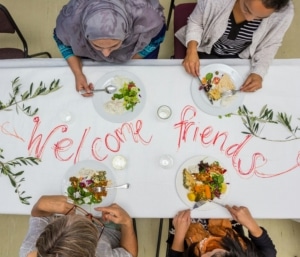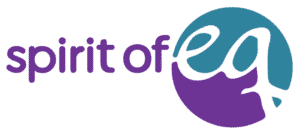This post is not about being woke……
A journey through our Bias,
In this world that is becoming increasingly interconnected, the importance of diversity for learning, acceptance and finding a way to include cannot be overstated. Yet, despite our differences, we often find ourselves struggling to understand each another. This is where emotional intelligence and tools like the Enneagram can play a transformative role. By exploring the intersections of these concepts, we can enhance our appreciation for diverse perspectives and promote environments that include rather then divide.
Let’s take a short journey through a few stories that challenge biases, build cultural competence, and encourage reflection on our own assumptions. Together, we will discover how understanding different Enneagram types can help us foster peaceful communities rooted in inclusivity.
There is power in Emotional intelligence (EI) and its ability to recognize, understand, and manage our own emotions while also being aware of the emotions of others. It is a crucial skill in navigating the complexities of human interactions, especially in diverse settings.
Consider the story of Maya, a team leader in a multinational company, who I have worked with. Maya was known for her exceptional emotional intelligence. One day, during a team meeting, she noticed that her colleague, Ahmed, seemed unusually quiet. Instead of pushing forward with the agenda, Maya paused and asked Ahmed how he was feeling. (This is one of the most powerful things you can do with another person, as we DO NOT know what is going on inside of someone else)
“Honestly, I’m feeling a bit overwhelmed,” he admitted. “I’m the only one from my background in this meeting, and I sometimes feel like my voice doesn’t matter.”
Maya’s empathetic response opened the door for a deeper conversation about the challenges of being a minority in a predominantly different culture. By acknowledging Ahmed’s feelings, she not only validated his experience but also created a safe space for him to express himself. This moment of emotional intelligence fostered a sense of belonging and encouraged Ahmed to share his unique perspectives, enriching the whole team’s discussions. Another side benefit is that understanding another’s culture/life is a way to expand your own journey in ways that may surprise you. Lynette and I have traveled all over the world for work and although exhausting at times, changed our entire outlook on living life together with others and not living in a bubble.
Understanding the Enneagram is a powerful tool for working with other personality types and the motivations behind our behaviors. It consists of nine distinct types, each with its own strengths, weaknesses, and ways of perceiving the world. By understanding these types, we can gain insights into how different individuals approach challenges, communicate, and relate to others.
By looking at the Enneagram through the lens of another story we can see how this works—this time featuring Sarah, a passionate advocate for diversity and inclusion. Sarah is a Type 2, known as the Giver. She thrives on supporting others and creating harmonious relationships. However, her desire to help can sometimes lead her to overlook her own needs.
During a workshop on diversity, Sarah met James, a Type 5, known as the Observer. James is analytical and values knowledge above all else. While Sarah was eager to engage in discussions about emotional experiences, James preferred to observe and analyze from a distance. Initially, Sarah felt frustrated by James’s quiet demeanor, interpreting it as disinterest.
However, as the workshop progressed, Sarah learned about the Enneagram and realized that James’s approach was simply different from her own. Instead of pushing him to participate, she began to appreciate his thoughtful insights when he did choose to speak. This understanding transformed their dynamic, allowing Sarah to embrace the diversity of thought that James brought to the table. And while Sarah admitted that allowing her normal thoughts to be more accepting was not easy the rewards were worth it.
Challenging biases through interactive stories can foster inclusivity, as we confront our biases and assumptions. Interactive storytelling can be a powerful tool for this purpose. Go with me as we imagine a scenario where you are part of a community meeting discussing a new initiative aimed at improving local resources. I have taken this scenario from the a mixture of countless board meetings I have been part of.
As the meeting unfolds, you notice a newcomer, Priya, who has just moved to the area. She shares her perspective on the initiative, drawing from her experiences in a different country. However, instead of listening, you find yourself dismissing her ideas, thinking, “What does she know about our community?”
Now, pause for a moment. What if you were to step into Priya’s shoes? Imagine the courage it took for her to speak up in a room full of unfamiliar faces. By reflecting on her experiences, you might begin to see the value in her insights. This exercise challenges your biases and encourages you to embrace diverse perspectives.
Building cultural competence is the ability to understand, communicate with, and effectively interact with people across cultures. It requires an ongoing commitment to learning and growth.
I watched Maya, who decided to implement a cultural competence training program in her organization. She invited employees to share their stories and experiences related to diversity. One day, a quiet employee named Luis, a Type 9 known as the Mediator, shared his journey of growing up in a bilingual household.
“I often felt caught between two cultures,” Luis explained. “I wanted to fit in with my peers, but I also cherished my heritage. It was a constant balancing act.”
Maya listened intently, recognizing the importance of Luis’s story. She encouraged others to share their experiences, creating a rich tapestry of narratives that highlighted the beauty of diversity. This initiative not only built cultural competence but also fostered a sense of community and belonging among employees.
**Reflecting on Our Own Biases**
Reflecting on our own biases as we navigate the complexities of diversity and inclusion, it’s essential to look at our own biases and assumptions. Consider the following questions:
1. What assumptions do I hold about individuals from different backgrounds?
2. How can I challenge these assumptions and open myself to new perspectives?
3. In what ways can I use my emotional intelligence to create a more inclusive environment?
By engaging in this self-reflection, we can begin to dismantle the barriers that prevent us from fully embracing diversity.
**The Importance of Inclusivity in Fostering Peaceful Communities**
Ultimately, the importance of inclusivity in fostering peaceful communities is not just about creating a diverse environment; it’s about building those peaceful communities. When individuals feel valued and heard, they are more likely to contribute positively to their surroundings.
Let’s back in with Sarah and James. After their initial misunderstandings, they began collaborating on a project that combined Sarah’s passion for community engagement with James’s analytical skills. Together, they developed a program that addressed the needs of underrepresented groups in their community.
Their partnership not only strengthened their relationship but also created a ripple effect of inclusivity. Others in their organization began to recognize the value of diverse perspectives, leading to a more harmonious and productive workplace.
As we navigate the complexities of diversity and inclusion, let us remember the power of emotional intelligence and the Enneagram in fostering understanding and appreciation for one another. By embracing our differences and challenging our biases, we can create inclusive environments that promote peaceful communities.
Through these stories of empathy, reflection, and growth, we can inspire one another to become advocates for diversity and inclusion. Together, let’s embark on this journey, recognizing that our unique perspectives are what make our communities vibrant and resilient.
In the end, it is our collective commitment to understanding and embracing diversity that will pave the way for a more peaceful and inclusive world. I also want to make sure that you understand the words “diversity” and “inclusion” are not dirty words. When we throw around words and they become commonplace we tend to look at them differently they were intended. Check out what the Pew Research Center says about people coming to our country since 1850. You might be surprised to find out they are your ancestors.





Leave a Reply
Want to join the discussion?Feel free to contribute!